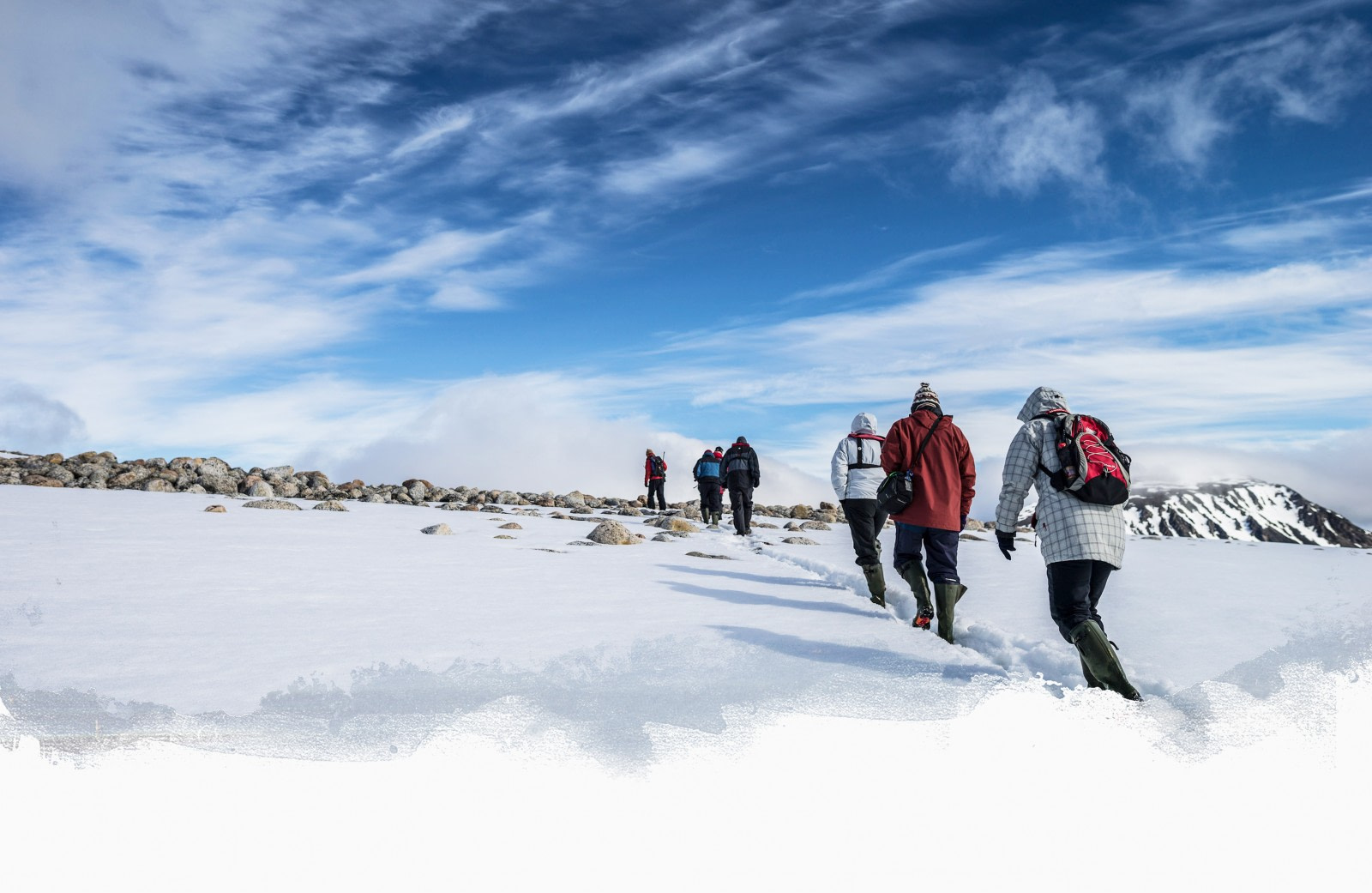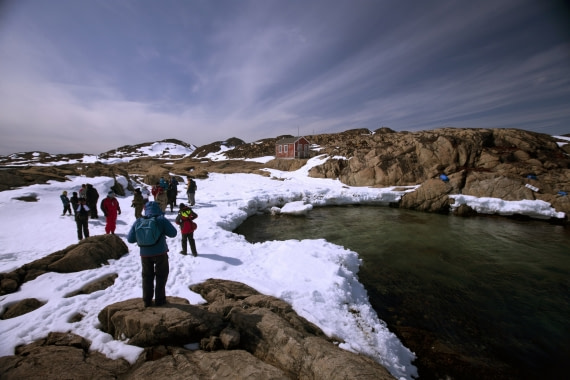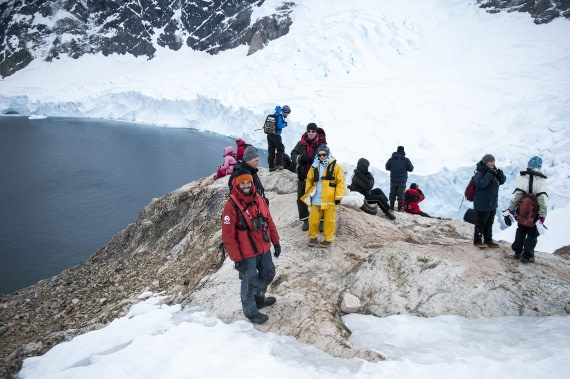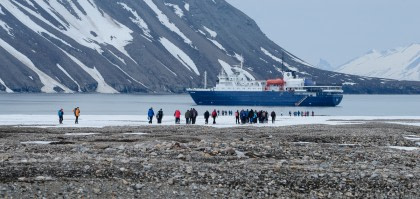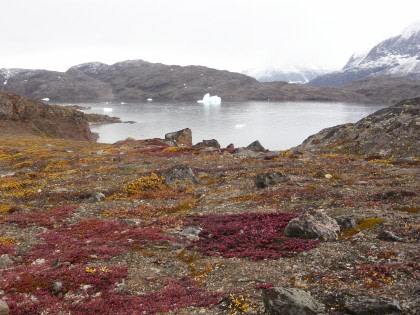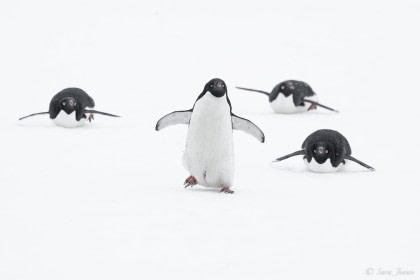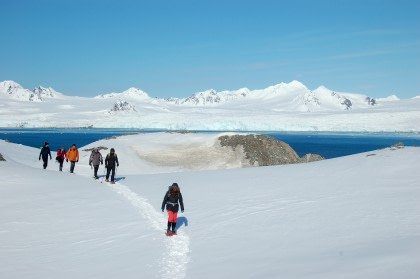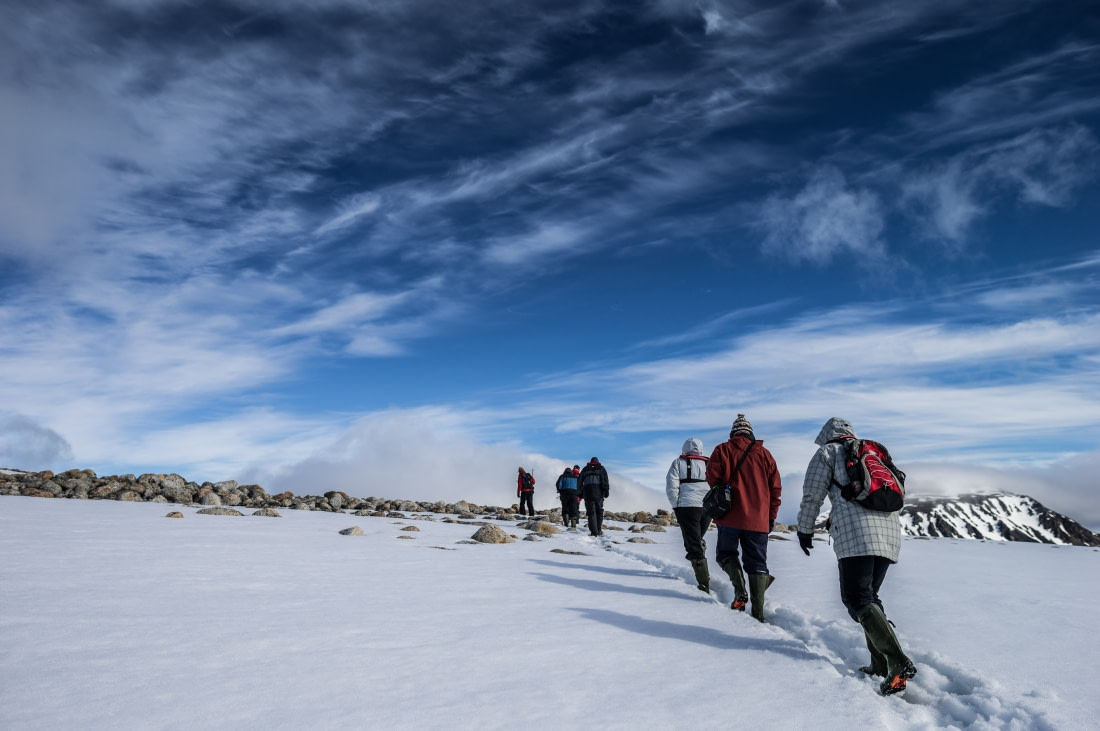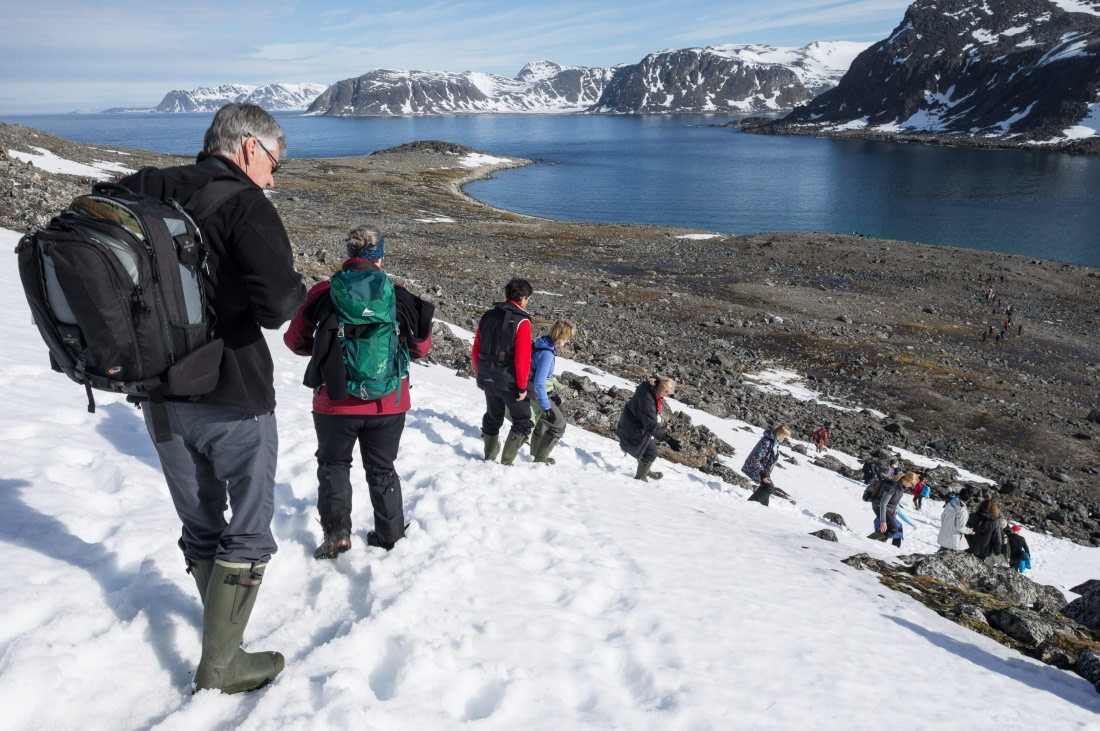Hiking the surreal terrain of the Arctic and Antarctica
There’s no closer way to explore a new area than on your own two feet. With this in mind, we offer a number of hiking expeditions built for all levels of hiker – from the casual walker to the hard-core hiking enthusiast.

Do I need to be an experienced hiker?
For basic walks, you just need to be in reasonably good shape and health. Hikes usually last somewhere between two and six hours. Keep in mind there are no paths and that you will be traveling over fairly rugged terrain and some small hills.
We usually offer one to three different types of walks per landing site, ranging from a casual stroll to a challenging hike.
In Antarctica, the longest hike takes about three hours. In the Arctic, the longest hike can last a full day, in which case we will provide you a packed lunch. All hikes are led and supervised by certified, experienced expedition guides.

How physically fit do I need to be?
Our hiking guides reserve the right to remove a passenger from the hiking group if they feel they are not in good enough health for a particular hike. This is for your safety as well as our guides.
If this happens, our experienced guides will be able to recommend another hike based on your fitness level. If you have any questions about your health or hiking skills in relation to our hikes, please do not hesitate to visit our FAQ or contact us.

What kind of clothing should I take hiking?
Please bring clothing for the variable weather of the polar regions. Layers are your friend. You’re going to get hot as you hike, and layers will enable you to shed clothing without losing your overall protection against the elements.
With that in mind we suggest the following gear:
- Hiking or walking poles
- Backpack (25 liters)
- Knee-high rubber boots with a grip sole (we provide these on our larger motor vessels but not on our smaller sailing vessels)
- A waterproof bag (especially for cameras), since you are likely to get splashed during the Zodiac ride from the ship to the shore
- Straps for tying snowshoes onto your back or backpack
- Sturdy ankle-high hiking boots (you can use your rubber boots as well)
- Gaiters (knee-high waterproof protection) to keep your lower legs dry
- Sunglasses
- Sunblock
- Thin under-socks (to stop blistering) and thick over-socks (with spares)
- One-liter water-bottle
- Thermal under-gloves (fleece finger gloves) and warm outer-gloves or mittens (and spares)
- Turtleneck or neck gaiter
- Urine-collection bottle (for Antarctica), such as a wide-opening Nalgene bottle
- Thermal underwear
- Fleece jacket or vest
- Down jacket or spare fleece jacket
- Breathable waterproof jacket and trekking trousers
- Warm fleece hat
- Binoculars
Do not bring cotton clothing like T-shirts or jeans. When cotton gets wet (either from outside moisture or sweat), it will stay wet a long time – not a good thing in a cold environment.

Do the hiking activities cost more?
No, they are covered in the cost of your cruise.
Are the polar hikes safe?
Yes, as all hikes are accompanied by one or more trained and experienced expedition guides. But in the Arctic (especially Svalbard), we must keep a constant lookout for polar bears. All Arctic hiking guides carry rifles due to this possibility while in polar bear territory.
We only hike in areas that are outside glaciated terrain, since treks inside these areas bring people into contact with crevasses and are therefore considered mountaineering. Mountaineering trips are always accompanied by at least one UIAGM-certified mountain guide.

Special note on Antarctic hiking
Hiking options in Antarctica are more limited than in the Arctic due to the differences in terrain. There are plenty of Antarctic hiking opportunities, however, on the islands of the Weddell Sea, the South Shetland Islands, and in South Georgia.
In South Georgia, in fact, you may have the chance to hike the final section of legendary polar explorer Ernest Shackleton’s famous walk.
